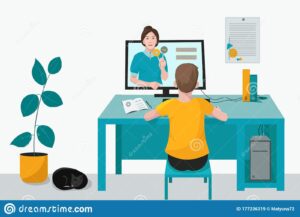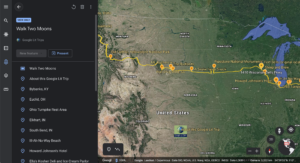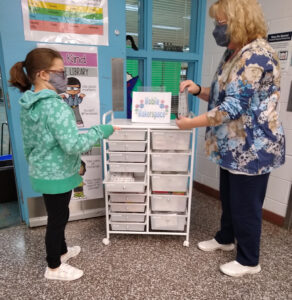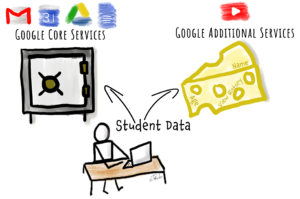As an educator, have you ever stopped to wonder what it’s like on the other side of the screen? What is like to be in the shoes of a student in the year 2020-2021? We did and it changed our entire perspective on virtual learning.
In the Fall of 2020, I and three of my JMU colleagues were student teachers placed at the same school in Virginia and much like everyone else we were uncertain what this year was going to hold. As schools began their journey into the intrepid waters of the unknown, piloting this new ship we call digital remote learning, it wasn’t long before the flood of communications, worries, and frustrations threatened to sink it: inboxes were full, phones were constantly ringing, systems were crashing, and everyone was beyond exhausted, trying their hardest to press on despite the storm of challenges caused by the pandemic.
I sat in a team meeting one day brainstorming how to chart a more effective and less choppy educational course, when the principal stated longingly, “I just wish I knew what it was like to be a student.” As the words struck deep into my heart as a Duke, I thought to myself, “I can do that... I could be a student for a day. I can be the change that I want to see... ”
The next thing I knew, I was rounding up my colleagues and we sat down to develop a strategy with the administration. Each of us was assigned a student schedule in a grade level different from the one we were placed in as student teachers. We borrowed Chromebooks from the library to simulate student technology, selected a specific calendar day that would have been indicative of a normal day’s worth of work for students, and then dedicated time to complete all the work and write out our findings. Before we began, we also noted that our findings were limited by the fact that we were collegiate educated students with reading and digital literacy skills that far surpassed the average student. As we got started, I was suspecting that our results would support the trends we saw as teachers: students were not reading instructions carefully or were just not motivated to do assignments.
You would think that four graduate students would have no problem completing one day’s worth of online instruction, but to be completely honest, it was brutal. While it only took us four hours to complete all the assignments, we were completely drained from the amount of reading, clicking, navigating, and just overall effort we had to put in behind our tiny laptop screens.
Allow me to emphasize that we were completely competent graduate students, who knew how to do all the work, and had zero learning challenges, but by the end of the day even our heads were splitting at the seams. Imagine how much more difficult it is for our diverse students? In our carpool the following day one of my colleagues remarked, “I am so glad that I get to be a teacher again today and not a student.”
We published our findings and suggestions in an informal research report and distributed it to the local school division, but perhaps the biggest take away from our experience was that it is necessary not only to empathize with our students but to also understand their experience by entering into it.
A lot has changed since the beginning of the school year and as routines and norms are established, the waters of education are becoming less murky. Students’ experiences are constantly fluctuating though between hybrid and remote models and so the question is just as relevant as ever—What is like to be in the shoes of a student? I challenge you to find out. It might rock your boat and change your whole perspective on digital learning like it did for me.
Written by Austin Evans. Austin is currently a graduate student at James Madison University finishing his Masters in the Arts of Teaching with a concentration on Middle Education. He worked with Ann Allred, Nicole Popule, and Allison Wellener to conduct the “A Day in the Life of A Student” research project at North Fork Middle School in Shenandoah County.








